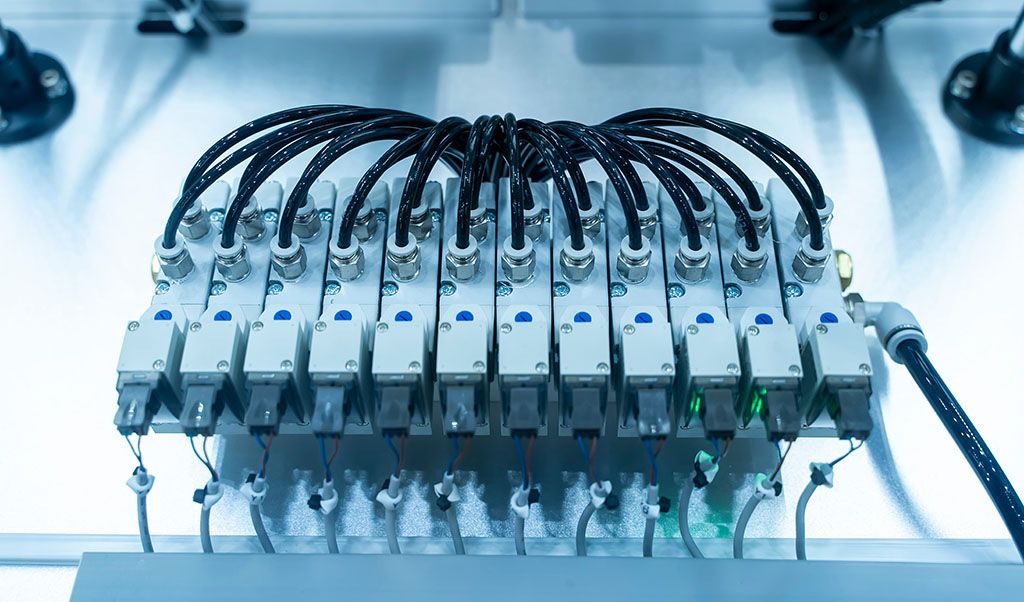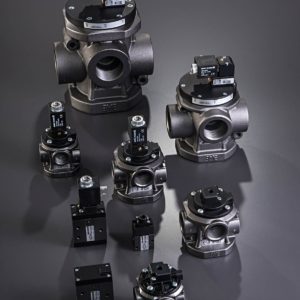Pneumatic valves
The pneumatic valves are devices used in many industrial and mechanical applications to modulate or control control the flow of compressed air or other gases in a pneumatic system. They consist of a valve body, an actuator and a sealing system.
Pneumatic valves can be classified according to their function, their geometry or the type of actuator used. Based on their operating mechanism there are: ball, butterfly, diaphragm, poppet, needle valves and many others.
Pneumatic valves can be controlled manually or automatically:
- Manually operated valves are operated by a lever, knob, or pedal;
- Pneumatically or electrically operated valves are operated by a control system using compressed air, solenoids, pressure switches or sensors.
Pneumatic valves are used in many industries, including factory automation, and machinery manufacturing. They are also often implemented in medical and dental equipment in order to control the flow and delivery of air inside the devices.
This type of valves offers many advantages over other flow control solutions: they are easy to install and maintain, have a long life and can operate in environments with extreme conditions. In addition, pneumatic valves can be operated easily by programmable control systems such as PLCs (Programmable Logic Controllers).
Generally, pneumatic valves are devices which consents the flow of compressed air and gases in many industrial and mechanical applications. Thanks to their versatility and reliability, they have become a fundamental tool for many modern production processes.
The use of valves in pneumatics
Pneumatic valves are key components in pneumatic technology. They are used to manage the flow of compressed air within a circuit, allowing the control of actuators and/or other devices. Furthermore, the valves can perform many other additional functions, such as space separation, shut-off of the compressed air, pressure reduction and switching between different flow paths.
Pneumatic valves are extremely versatile and can be used in a wide variety of industrial applications. For example, valves can be used to control the advance or rebound of devices operated by compressed air, such as pneumatic cylinders or motors.
They can also be used to check the opening and closing of pipes with vacuum.
Pneumatic valves can also play an important role in the safety of industrial machines. For example, they can be used to immediately release pressure in the event of an emergency or system failure.
There are different types of pneumatic valves available on the market, each with its own specific characteristics and functions. The most common are directional control valves, manually or electrically operated valves, gate valves and diaphragm valves.
The use of valves in pneumatics is essential to ensure the correct functioning of industrial systems that employ compressed air as the motive energy source. Thanks to their versatility and multiple functions, pneumatic valves allow precise and efficient control of the devices operated by compressed air and contribute to the improvement of the safety on work.
-

3-way valves, with poppet system, for direct vacuum
3-way valve for direct vacuum, Air extraction, Food industry, Moulding machinery, Standard products, Wood working machinery0,00€ Add to cart -



5-way poppet valve
5-way poppet valve, Food industry, Moulding machinery, Standard products, Transport, Welding systems, Wood working machinery0,00€ Add to cart -


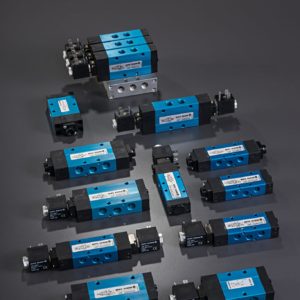
3 and 5-way spool valves
3 and 5-way spool valves, Food industry, Moulding machinery, Welding systems, Wood working machinery0,00€ Add to cart -


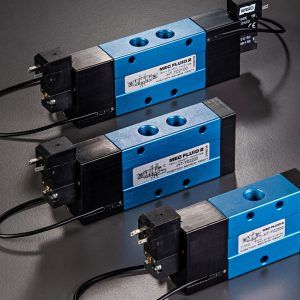
Valves with position sensor
3 and 5-way spool valves, Food industry, Moulding machinery, Welding systems, Wood working machinery0,00€ Add to cart -


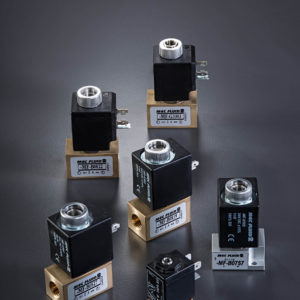
Solenoid pilot valves for air and vacuum
Air extraction, Solenoid pilot valves for air and vacuum, Standard products, Transport, Welding systems, Wood working machinery0,00€ Add to cart -


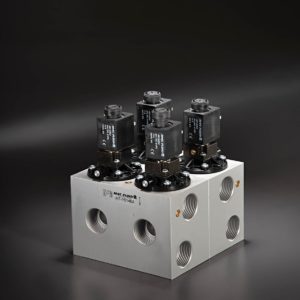
Pneumatic valves: operating mechanism and applications
Pneumatic valves are used in many industries such as automation, robotics, power generation and transportation. Their operation depends on the valve type and specific application. However, in general, pneumatic valves consist of a valve body, a piston or diaphragm, and a spring. When air pressure is increased in the valve body, it starts to push the piston or diaphragm against the spring, creating a flow of air through the valve outlet. Whether the valve opens or closes depends on the application.
One of the most common applications of pneumatic valves is in automatic control systems. Pneumatic valves can be used to control the movement of pneumatic cylinders in automatic machines or industrial robots. Additionally, pneumatic valves are also used in power generation, such as in wind or solar power plants.
Their ability to regulate the flow of compressed air makes pneumatic valves the right choice for many automated mechanical processes. Furthermore, thanks to their reliability and resistance to high temperatures and high pressures, pneumatic valves are considered one of the main components of modern industrial plants.
Conclusions
When it comes to select the most suitable pneumatic valve for a given application there are some factors to consider. At Mec Fluid 2 we have a commercial technical team that supports you by choosing the best-suited pneumatic automation technology for your requirements. We will help you to find exactly the most suitable solution for your application.
